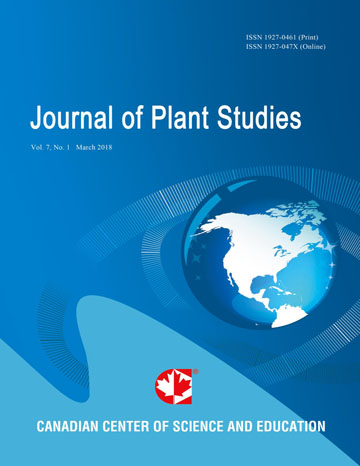High Allelopathic Activity of Carotenoid-accumulating Callus of a Halophilic Mangrove Plant, Avicennia alba: Protoplast Co-culture Method with Digital Image Analysis
- Hamako Sasamoto
- Manabu Hayatsu
- Suechika Suzuki
Abstract
A yellow callus strain was established from hypocotyls of a halophilic mangrove plant, Avicennia alba, by subculture in the dark. Allelopathic activities of yellow A. alba callus were assayed using recipient lettuce protoplasts at three growth stages by the protoplast co-culture method with digital image analysis. The protoplast cultures of yellow A. alba callus were halophilic to NaCl, KCl, and MgCl2 (up to 200 mM) but not to CaCl2. By contrast, NaCl and KCl inhibited the growth of non-salt-tolerant lettuce protoplasts, while CaCl2 and MgCl2 stimulated their growth at low concentrations. Highly salt-tolerant or halophilic mangrove plant cells were expected to have low allelopathic activity, but the protoplasts of yellow A. alba callus had very strong allelopathic activity. The inhibition was strongest at the cell division stage with growth being inhibited to 50% and 9% of the control by 104 mL-1 and 5 × 104 mL-1 of A. alba, respectively. There was less inhibition at the yellow pigment accumulation stage of lettuce. Stimulation was observed at the early cell wall formation stage with up to 105 mL-1 of A. alba. The yellow pigment of yellow A. alba callus was extracted with hexane and its absorption spectrum showed the wavelength peaks of a carotenoid, neoxanthin. Using transmission electron microscopy, specific electron-dense structures were found in yellow A. alba callus, which were similar to the undeveloped ultrastructure of a carotenoid. A carotenoid was strongly suggested to be the putative allelochemical in yellow callus of A. alba.
- Full Text:
 PDF
PDF
- DOI:10.5539/jps.v9n1p1
Index
- AGRICOLA
- CAB Abstracts
- CABI
- CAS (American Chemical Society)
- CNKI Scholar
- Elektronische Zeitschriftenbibliothek (EZB)
- Excellence in Research for Australia (ERA)
- Google Scholar
- JournalTOCs
- Mendeley
- Open policy finder
- Scilit
- Standard Periodical Directory
- Technische Informationsbibliothek (TIB)
- WorldCat
Contact
- Joan LeeEditorial Assistant
- jps@ccsenet.org
